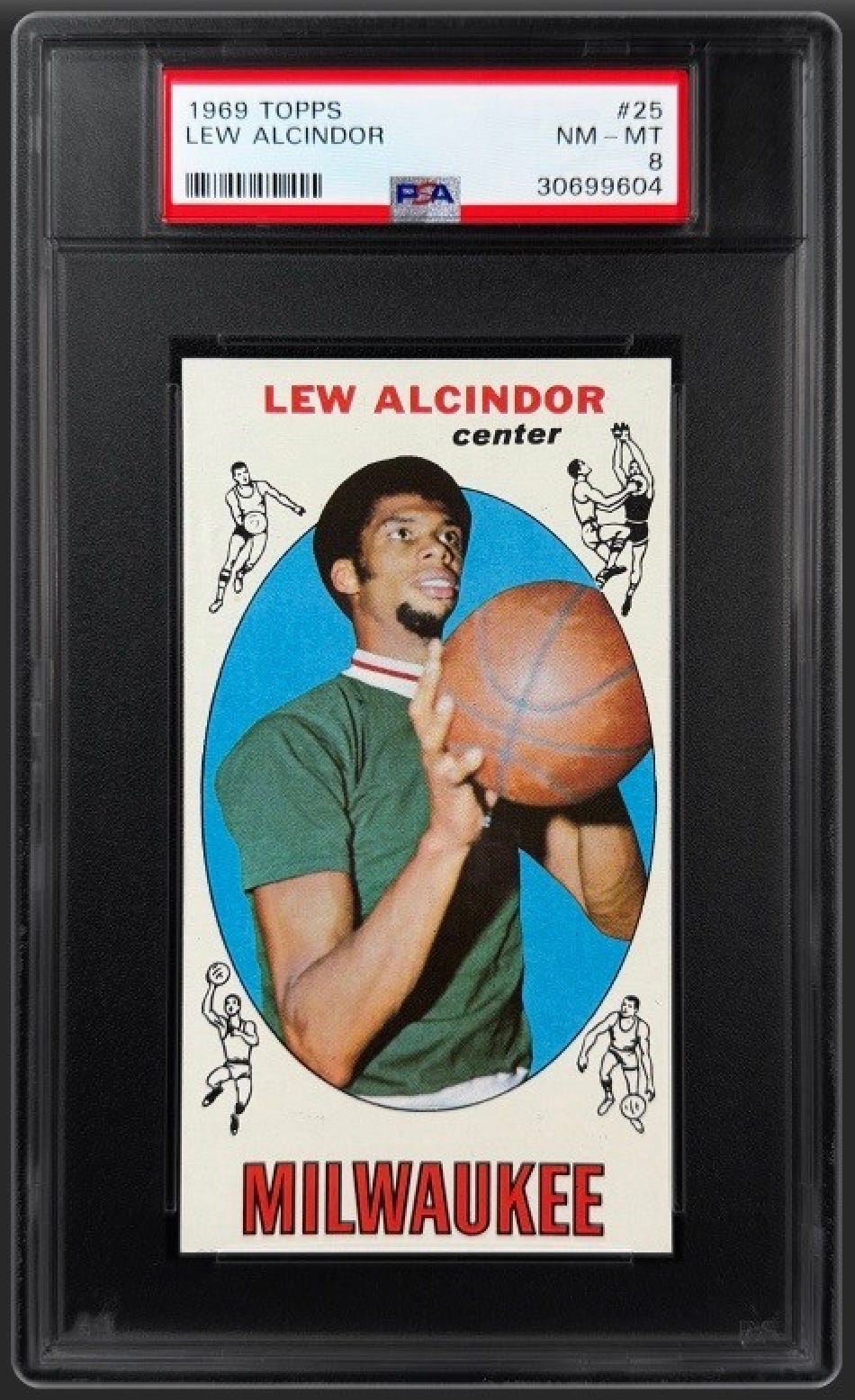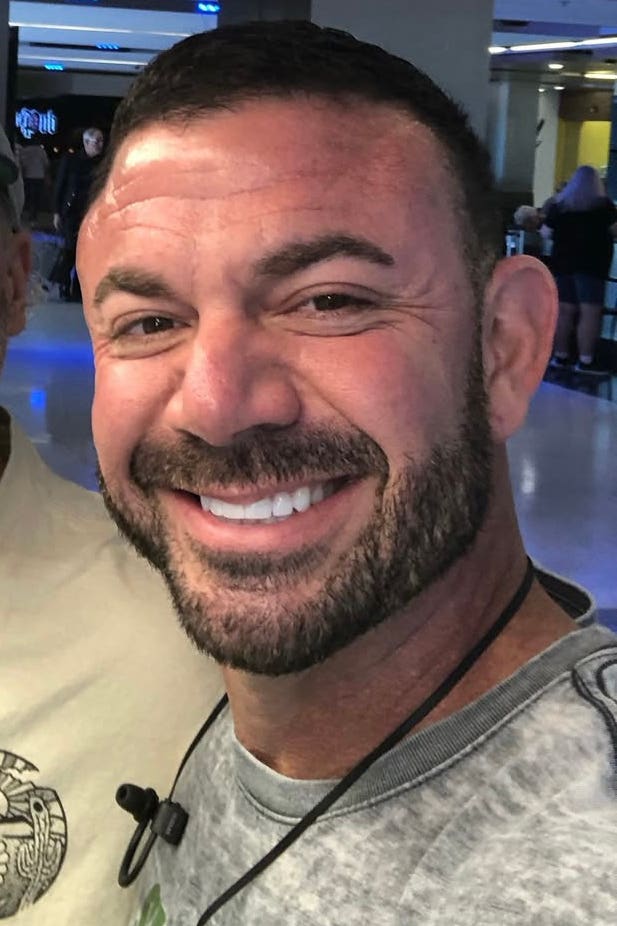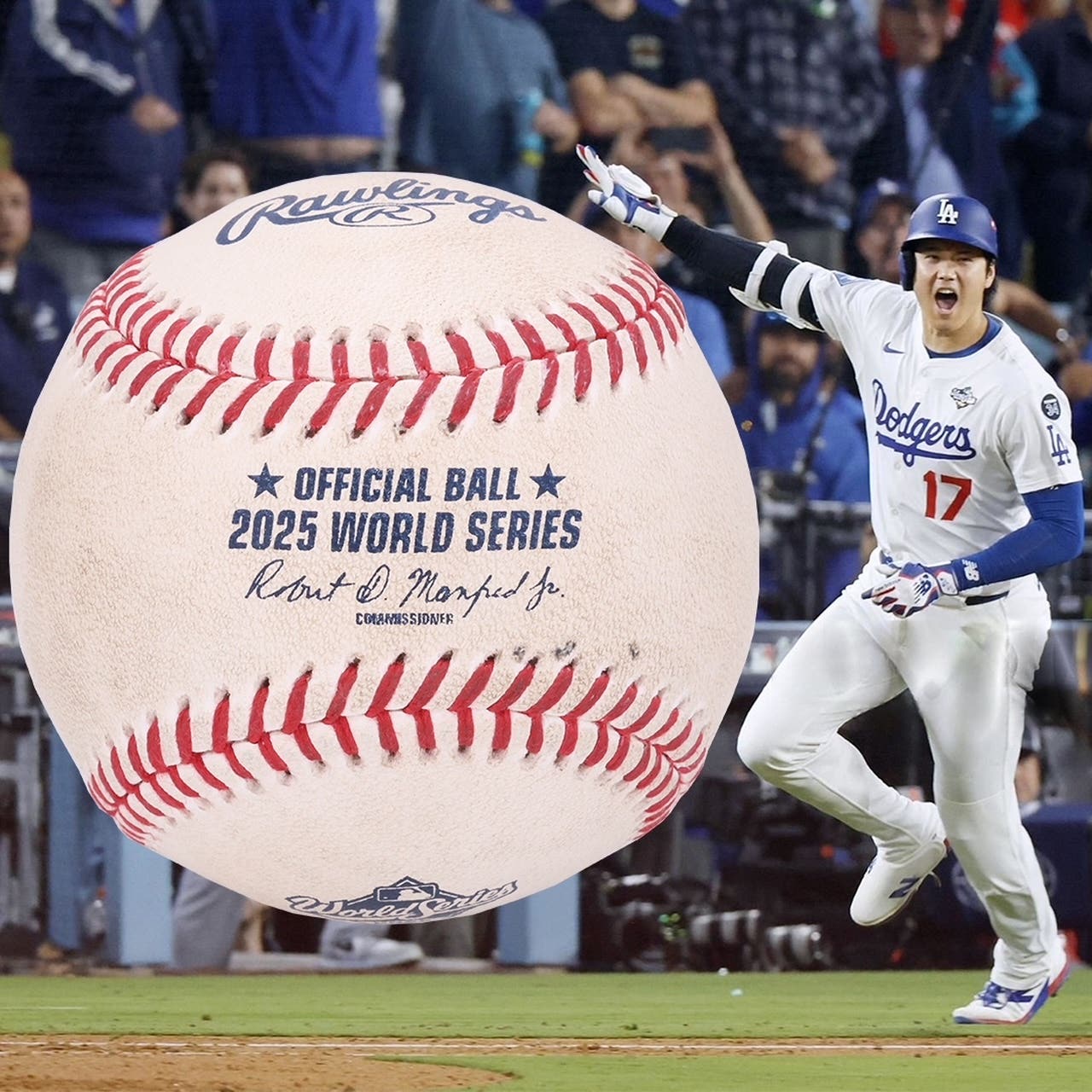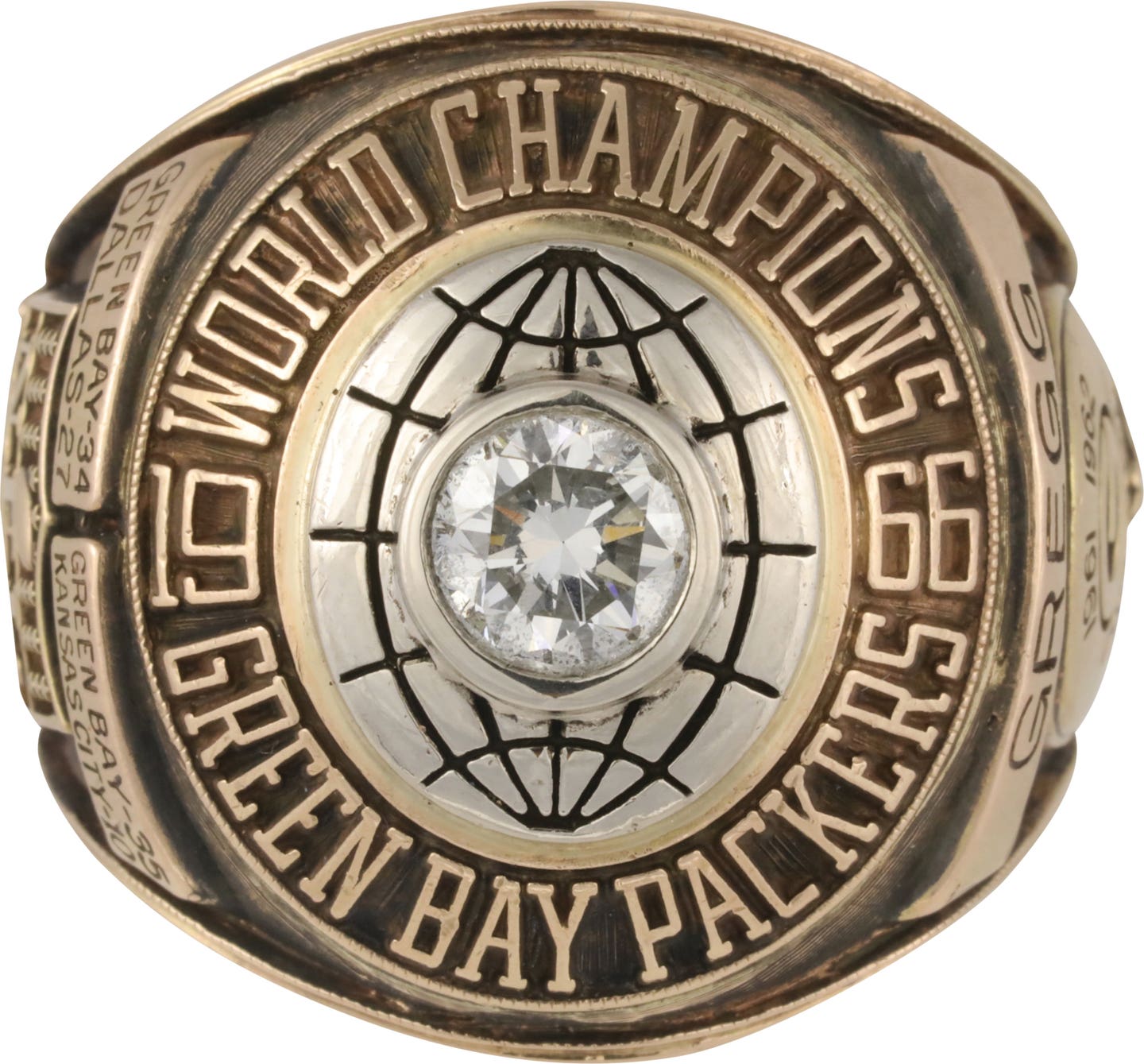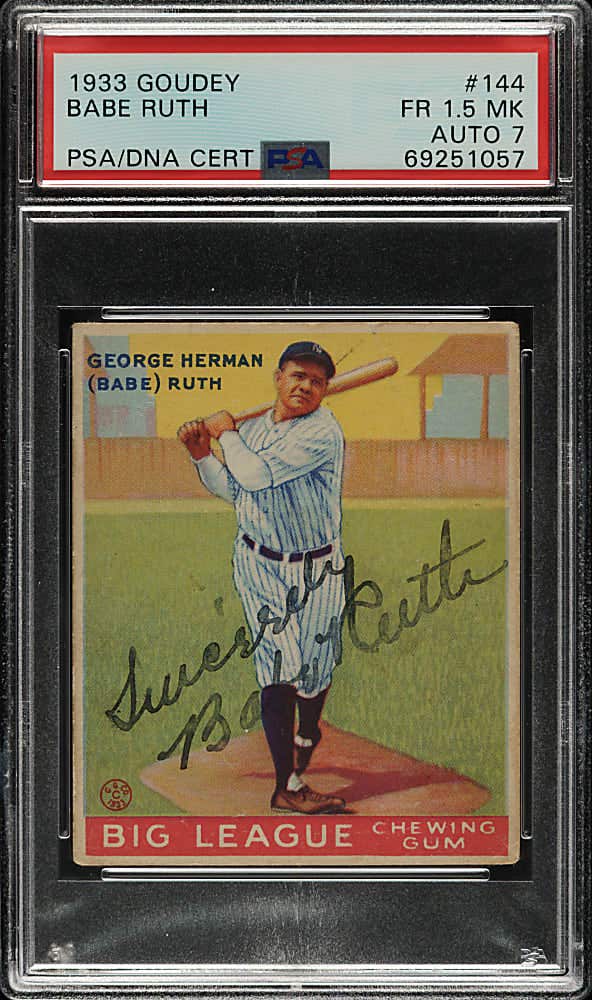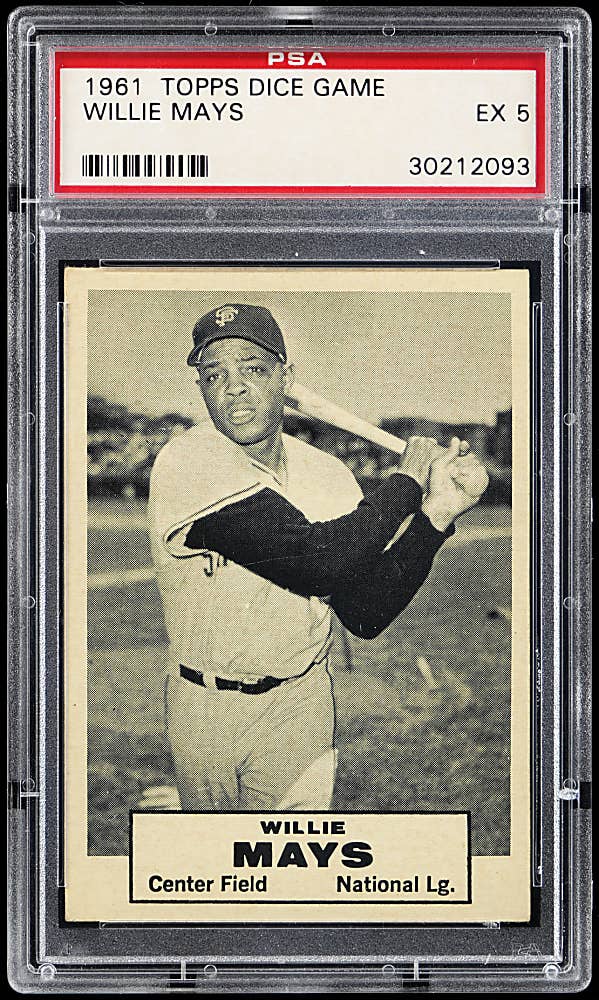What follows is an exclusive excerpt from Operation Bullpen: The Inside Story of the Biggest Forgery Scam in American History, by Kevin Nelson, to be published in October by Southampton Books ($18.95, www.operationbullpen.com. The book is the first full account of the notorious nationwide forgery ring that made tens of millions of dollars before being brought down by the FBI in late 1999 after a three-year undercover investigation. This will be a two-part SCD feature. The second installment will run in the Sept. 15 issue (next week). This first excerpt details how the ring got started. After learning to forge Mickey Mantle's autograph, Greg Marino, the "master forger" (as the media later dubbed him), decided to reveal his new-found talents to the ring's mastermind, Wayne Bray, at Bray's card shop in southern California:
A Mantle souvenir plate hung on the wall of W.W. Sports Cards. Marino asked Bray to bring it down for him, which he did, setting it on the front display counter. Marino said watch this, and with a gold pen he had brought for the occasion, signed a perfect Mantle sig on the plate.
Suddenly another dull, purposeless day in Vista, Calif., radiated with meaning.
Bray's droopy, heavy-lidded eyes popped wide open and "his face turned red," said Marino. Bray agreed: "I looked at it, and I went bing-bing. It was perfect, a perfect Mantle."
He challenged Marino to do it again, giving him a piece of paper to see if lightning could strike twice. It did-two, three, four, five times in a row. Marino's half moons were even better than Mantle's!
Bray has described his personality as "spontaneous-spontaneous combustion." This was the moment of combustion, the moment that lit the fuse. In this instant, the instant he laid eyes on Marino's perfect Mantle, he grasped the raw potential of what they could do together. He could see the next thing, and he could see how the next thing, if they could make it work, would lead to another, bigger thing, and how the next thing after that could be bigger still, bigger than all the other previous things combined, and it could all keep snowballing like that and the money could be gargantuan. Life-changing, brain-spinning, Super Lotto jackpot-type money.
No more small-time trading card deals. No more pinching pennies to get ahead, when you never get ahead anyway. No more worrying about paying the rent or the bills or anything else. Nothing would be out of reach for them. The only thing they'd have to worry about was how to spend all the money they'd be making.
In his endless days and months and years at W.W. Sports Cards, Bray had learned patience, a trait that did not come naturally to him. Patience he now had in bunches; what he lacked was money, and this lack, and how to remedy it, was what dominated his waking thoughts.
Well, here was the answer. Think no more. Wait no more. Their main chance had arrived.
Quickly, Bray got on the horn with Stan Fitzgerald, a big-time New Jersey memorabilia dealer with whom he had done deals in the past. Without mentioning Marino by name, to avoid the possibility of a double-cross, "I hinted to Stan that I had a (forger) and that I could get anything he wanted," said Bray. Interested, Fitagerald said sure, he'd take a look at the guy's "talent"- talent being a code word for forgery - and placed an order for some bulkies and flats.
The bulkies were baseballs to be signed with Mantle's sig, and the flats were photos of him. The balls came from one of Fitgerald's equipment distributors, and the photos from a photo supply house. He shipped them to W.W. Sports Cards in California. When they arrived, Bray waited till he could wait no more, closed the shop, then hurried over to Marino's apartment with his SUV full of blanks. With Bray setting the merchandise up and Marino rapidly signing, the two burned through the order, and when they finished they loaded everything back into Bray's vehicle and drove it over to UPS to ship to New Jersey.
But as soon as they filled this order - no, before that: as soon as he saw perfection etched in gold on the Mantle plate - Bray knew if they were really going to get this thing going, they needed to do more names than just Mantle.
"If you can do Mantle," he told Marino, echoing what others had said, "you can do DiMaggio."
There are three baseball autographs every serious collector has to have: Mantle, DiMaggio and Ted Williams, known in the trade as the Big Three. Marino had emotional ties to his Mantle, but his motive for learning DiMaggio was pure commerce. He agreed with Bray that if he learned him and got him right, they'd make more money.
"Some people said you could never do DiMaggio," Marino recalled. "His signature was too perfect, always consistent. The big thing on Joe's name was learning the J. That was the most important. He was very consistent in the way he signed his J. Both the J and the D had to be consistent, and the D had to be at a certain angle. It was easy to mess up the D."
Marino messed up a lot in the beginning, a fact his taskmaster of a coach was not shy about pointing out. Even though most of the people who saw these autographs wouldn't know the difference between DiMaggio's J and Jersey Joe Walcott's, Bray knew how Joe D. did it, and he felt strongly this was the way it should be done. Furthermore, he knew another stickler for quality, Stan Fitzgerald, was eyeballing each and every piece they sent him, so they had to be good, better than good. Bray also believed, as did Stan the Man, that their insistence on quality gave them an edge over other forgers who were turning out slop just to make a fast buck.
"Greg had a gift," Bray said about the man who, in his career, probably signed more than one million forgeries. "But he practiced too. A lot."
After DiMaggio, they moved on to the last of the Big Three. "With Ted," said Marino, "the d and the W would run together. Then Ted would come down on the first loop of the W but not quite finish it and then go into the i. It was like with Joe and Mickey. I did all these letters over and over again until I felt I got it."
An autograph was a form of personal expression, and yet each one conformed to a pattern, such as the two distinctive half moons of Mantle's signature. Once Marino discovered this pattern, he felt he could lock into a sig and nail it. The M of Michael Jordan's name, for instance, was written in the shape of a 23, his number for the Bulls. "He was very consistent in the way he did it," said Marino, who tried to be just as consistent when forging him. "It was exactly the same every time, probably because he signed so much himself."
Still, Marino couldn't do any signature unless he first saw a genuine example of it. This was one of the early challenges they faced: digging up exemplars. Some days Marino and Bray would meander into a memorabilia shop and while Wayne chatted up the sales clerk, occupying his attention, Marino would stand over by a far wall studying a star's photo with his or her signature on it, practicing how to forge it on the sly. Seeing how important exemplars were to the growth of the business, Bray rapidly took this duty over, relentlessly combing through magazines, books, autograph handbooks and sports cards in search of them. When he found one he made a copy and inserted the page into a black three-ring binder. The "black book," as they jokingly called it, was no joke, for every sig in it potentially represented money.
The more exemplars they had, the more sigs Marino could do - the big names as well as the lesser ones, though they concentrated on the superstars for the obvious reason that their signed memorabilia commanded the highest pric es. Their autographs were also better known among collectors, so if something seemed screwy about them, they might be more easily spotted. To get objective appraisals of Marino's work, his best sigs were sent to the leading sports autograph experts in the country who, for a fee, inspected them for authenticity. They did not know, of course, that what they were inspecting was fake. In the unanimous opinion of these experts, the material appeared genuine.
Then in August 1995, the steady flow of illegal cash they were making turned into a raging torrent.
Earlier that summer the 63-year-old Mickey Mantle, an alcoholic who was suffering from liver cancer, had received a liver transplant. Doctors found, however, that the cancer had spread to other parts of his body. Knowing he was about to die, looking old and frail and emaciated, the man who had been a hero to a generation of boys and men held a televised press conference at the medical center in Texas where he was a patient. He delivered some of his remarks directly to the nation's children. Don't be like me when you grow up, he said. He was nobody's role model. A few weeks later, he was dead.
The grace in which he held himself at the end, the humility he showed, only deepened the public's affection for Mantle, causing a frenzy of orders for memorabilia associated with him. Seemingly every sports fan in America who had been touched by him during his life wanted to stay connected to him now that he was gone. But Bray and Fitzgerald were prepared, stocking up on Mantle merchandise during his sad, public demise. So when the end came they were ready to act, Bray rolling up to Marino's place in a vehicle full of photos, posters, balls, bats, jerseys and whatever else he could fit in.
"Wayne showed up at my door with piles of Mantle merchandise," Marino recalled with a kind of astonishment. "He said to me, 'You're gonna buy a new Explorer next week,' and he was right. I did. We did that much in business. Just tons and tons of orders. We went crazy."
Bray did the setups and Marino, wearing gray sweats and white socks and no shirt - his other favorite work outfit besides boxers - spun out half moons till he was dizzy, pot smoke and reggae music filling the room and the two of them laughing and moving to the music and having the criminal time of their lives.
In September, after the rush had slowed down some, Marino and Bray flew off to see Cal Ripken break Lou Gehrig's consecutive game streak at Camden Yards. It was strictly a spur of the moment thing. They got the most expensive rooms at the classiest Inner Harbor hotel they could find on such short notice. Nobody at the hotel or anywhere else asked where their money came from; cash was cash, and when you have it people are just happy to take it from you. Tickets for the game were impossible to come by, but they threw money at the problem and the problem went away. They got choice seats and witnessed history.
The next month, Marino was hooked up with a ticket to see his beloved Yankees play the Mariners in the fifth and deciding game of the American League Division Series. So, again, totally spur of the moment, Marino hopped on a plane to Seattle. The Yankees lost, which bummed him out, but he lived it up like a rich man and had a grand time. That's what happens when you've got a wallet stuffed with bills and the knowledge that when it empties out, it's going to fill right back up again. In November, Stan the Man ordered 1,000 more Mantle photos, and the forgery brothers and their growing band of confederates were off and running again.
In the Sept. 15 issue's exclusive excerpt of Operation Bullpen: The Inside Story of the Biggest Forgery Scam in American History, we will carry one of the most dramatic moments in the entire investigation: when FBI undercover agents penetrated a big "sit-down" of the kingpins of the fraud racket in southern California and overhead them discussing their plans to elude the FBI. This excerpt is copyrighted by Kevin Nelson.



